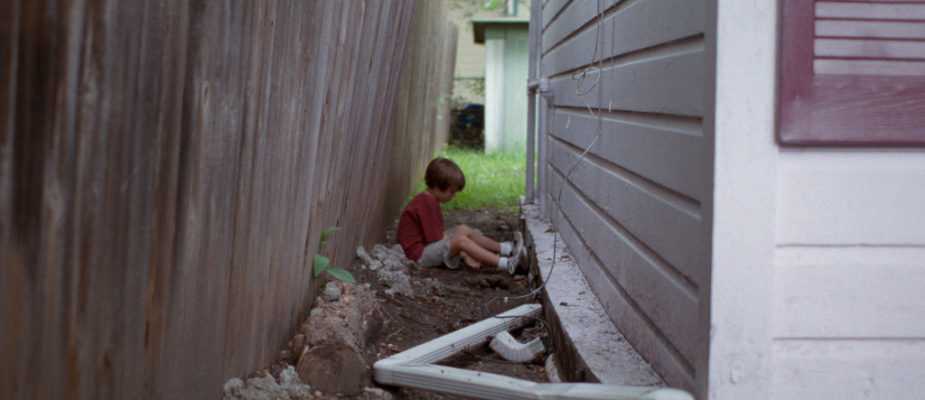For the adventurous American cinema-goer, 2014 wasn’t just a good year. It was one of the best in recent memory, a year so rich in international art cinema (and auteur-driven American indies, see above) that there might have been twenty-five or more legitimate contenders for a more typical year’s ten best. From an artistic standpoint, it hardly mattered that Hollywood had a mostly uninspiring year, from a very soft summer box office to a seemingly less than memorable prestige-season slate (save for, potentially, Clint Eastwood’s American Sniper and Paul Thomas Anderson’s Inherent Vice, Oscar long-shots both, which will open in Oklahoma City in January 2015). In 2014, outstanding work came from just about everywhere except again from major Hollywood studios, from long-standing world cinema hot spots such as France, Taiwan and Iran, to twenty-first century powers Berlin and the Philippines, to even newer centers such as the Ukraine (where, in the case of Maïdan, an anti-journalistic documentary masterwork that OKCMOA Museum Films will screen Jan. 8-9, the cinema proved to be remarkably present at a time of enormous political unrest and revolutionary action). 2014 showed, without equivocation, that cinema remains an essential artistic and cultural force the world over – even and perhaps especially when Hollywood seems beholden to its aesthetically diminishing formulas.
Enough of the negativity, on to my choices for the ten best films of 2014:
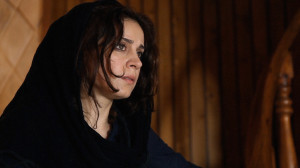 For this writer, the film of the year – defining 2014 in terms of the U.S. theatrical releases rather than international debuts – was Jafar Panahi’s Closed Curtain (co-directed by Kambuzia Partovi, 2013; pictured), which OKCMOA Museum Films screened in early October. The second film made by the great art house director under the conditions of his twenty-year filmmaking ban by the Iranian government, Closed Curtain defiantly and courageously claims ownership for a forbidden work of film art, from unconscious conception to conclusion. Closed Curtain, which is conceivably Panahi’s greatest film, not to mention one of his more under-appreciated, also gave this writer more to think about, on a conceptual level, than any other 2014 Oklahoma City premiere. Were I handing out year-end awards, Closed Curtain would be an easy choice for both ‘best picture’ and ‘best original screenplay.’
For this writer, the film of the year – defining 2014 in terms of the U.S. theatrical releases rather than international debuts – was Jafar Panahi’s Closed Curtain (co-directed by Kambuzia Partovi, 2013; pictured), which OKCMOA Museum Films screened in early October. The second film made by the great art house director under the conditions of his twenty-year filmmaking ban by the Iranian government, Closed Curtain defiantly and courageously claims ownership for a forbidden work of film art, from unconscious conception to conclusion. Closed Curtain, which is conceivably Panahi’s greatest film, not to mention one of his more under-appreciated, also gave this writer more to think about, on a conceptual level, than any other 2014 Oklahoma City premiere. Were I handing out year-end awards, Closed Curtain would be an easy choice for both ‘best picture’ and ‘best original screenplay.’
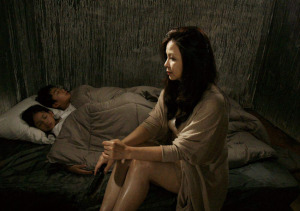 ‘Best director,’ however, would go to Tsai Ming-liang for Stray Dogs (2013; pictured), one of three exceedingly great 2013 Sinophone premieres that made their OKCMOA Museum Films debuts during the past twelve months. (Wong Kar-wai’s The Grandmaster, which screened at OKCMOA’s 2014 Oscar Tune-up and Jia Zhangke’s A Touch of Sin, which made its local theatrical premiere in association with the Museum’s My Generation: Young Chinese Artists exhibition, were the other two.) Through his use of exquisitely composed, aggressively durational long takes, Tsai creates an original cinematic idiom that shares much in common with the embodied presence of performance art, while encouraged a more heightened and active form of censorship that is very much at home in the museum.
‘Best director,’ however, would go to Tsai Ming-liang for Stray Dogs (2013; pictured), one of three exceedingly great 2013 Sinophone premieres that made their OKCMOA Museum Films debuts during the past twelve months. (Wong Kar-wai’s The Grandmaster, which screened at OKCMOA’s 2014 Oscar Tune-up and Jia Zhangke’s A Touch of Sin, which made its local theatrical premiere in association with the Museum’s My Generation: Young Chinese Artists exhibition, were the other two.) Through his use of exquisitely composed, aggressively durational long takes, Tsai creates an original cinematic idiom that shares much in common with the embodied presence of performance art, while encouraged a more heightened and active form of censorship that is very much at home in the museum.
 The best 2014 release that did not play at the museum – but which can be screened presently through Netflix’s instant service – was French filmmaker Alain Guiraudie’s Stranger by the Lake (2013; pictured), which justly bested Blue is the Warmest Color for the 2013 ‘Queer Palm’ at the Cannes Film Festival. Sexually explicit in its depiction of gay cruising culture and set within the sunny holiday landscapes most associated with late New Wave master Eric Rohmer (whose work screens Jan. 9-11 at OKCMOA), this masterclass in suspense-based storytelling ultimately serves as an allegory for the dangers of unsafe sex in the AIDS era. (While I’m on the topics of French film, the nouvelle vague and films that did not play the Noble Theater, I perhaps should mention my regret that OKCMOA Museum Films was not able to screen Jean-Luc Godard’s 3-D Goodbye to Language, owing to our, like many like venues’, technical limitations. Based on the stature of its most adamant defenders, and based on my own viewing of the film in 2-D, it too likely would have had a place in this survey, had we only been able to show it.)
The best 2014 release that did not play at the museum – but which can be screened presently through Netflix’s instant service – was French filmmaker Alain Guiraudie’s Stranger by the Lake (2013; pictured), which justly bested Blue is the Warmest Color for the 2013 ‘Queer Palm’ at the Cannes Film Festival. Sexually explicit in its depiction of gay cruising culture and set within the sunny holiday landscapes most associated with late New Wave master Eric Rohmer (whose work screens Jan. 9-11 at OKCMOA), this masterclass in suspense-based storytelling ultimately serves as an allegory for the dangers of unsafe sex in the AIDS era. (While I’m on the topics of French film, the nouvelle vague and films that did not play the Noble Theater, I perhaps should mention my regret that OKCMOA Museum Films was not able to screen Jean-Luc Godard’s 3-D Goodbye to Language, owing to our, like many like venues’, technical limitations. Based on the stature of its most adamant defenders, and based on my own viewing of the film in 2-D, it too likely would have had a place in this survey, had we only been able to show it.)
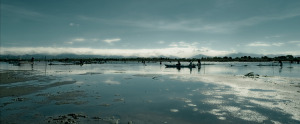 In more positive local news, 2014 witnessed the US and Oklahoma City theatrical premieres of Filipino director Lav Diaz’s four-hour, Crime and Punishment-themed epic, Norte, the End of History (2013; pictured). (Actually, it was Diaz’s first film to receive any sort of commercial distribution in the US, despite his lofty global reputation.) More than any other film in 2014, and more successfully than even the best long-form television series, Diaz’s monumental – though short by his own standards – masterwork created an experience that was closest to the act of reading great literature, in all its character complexities and its philosophical and theological density.
In more positive local news, 2014 witnessed the US and Oklahoma City theatrical premieres of Filipino director Lav Diaz’s four-hour, Crime and Punishment-themed epic, Norte, the End of History (2013; pictured). (Actually, it was Diaz’s first film to receive any sort of commercial distribution in the US, despite his lofty global reputation.) More than any other film in 2014, and more successfully than even the best long-form television series, Diaz’s monumental – though short by his own standards – masterwork created an experience that was closest to the act of reading great literature, in all its character complexities and its philosophical and theological density.
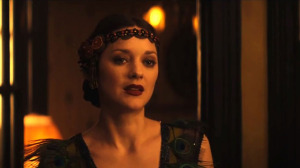 Built around an outstanding Marion Cotillard performance – perhaps equaled in 2014 only by Cotillard’s equally exceptional turn in Luc & Jean-Pierre Dardenne’s humanist opus, Two Days, One Night, a February 6-12, 2015 OKCMOA Museum Films premiere – and featuring some of the year’s most measured and precise classical narrative filmmaking, James Gray’s The Immigrant (2013; pictured), is precisely the sort of film that would sweep the Oscars if the Academy actually reflected the best in American cinema (or if its legendary studio head didn’t ask for cuts that would have irrevocably harmed the year’s best English-language film). But Oscar doesn’t necessarily represent the best, it never has, and it probably never will. Well maybe not never if Boyhood (2014; pictured top), a work of overwhelming emotional impact and conceptual rigor, manages to shake its “underdog front-runner” status and claim the top prize that almost seems to be its birthright as the indie event-film of 2014.
Built around an outstanding Marion Cotillard performance – perhaps equaled in 2014 only by Cotillard’s equally exceptional turn in Luc & Jean-Pierre Dardenne’s humanist opus, Two Days, One Night, a February 6-12, 2015 OKCMOA Museum Films premiere – and featuring some of the year’s most measured and precise classical narrative filmmaking, James Gray’s The Immigrant (2013; pictured), is precisely the sort of film that would sweep the Oscars if the Academy actually reflected the best in American cinema (or if its legendary studio head didn’t ask for cuts that would have irrevocably harmed the year’s best English-language film). But Oscar doesn’t necessarily represent the best, it never has, and it probably never will. Well maybe not never if Boyhood (2014; pictured top), a work of overwhelming emotional impact and conceptual rigor, manages to shake its “underdog front-runner” status and claim the top prize that almost seems to be its birthright as the indie event-film of 2014.
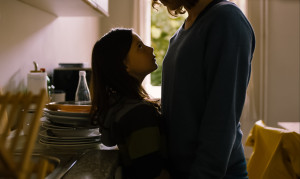 Also ranking among my year’s ten best, in no particular order, were Stephanie Spray and Pacho Velez’s Nepalese-set Manakamana (2013), a minimalist work of experimental documentary that invites extended consideration of the off-screen space created by its camera. From the Berlin School, Ramon Zürcher made the year’s best first film with The Strange Little Cat (2013; pictured), an expressionistic mash-up of domestic melodrama and the beloved films of French comedian-filmmaker Jacques Tati that also played the Noble Theater. And American indie icon Jim Jarmusch returned with Only Lovers Left Alive (2013), and in the process gave us the new standard of the 21st century vampire film cycle.
Also ranking among my year’s ten best, in no particular order, were Stephanie Spray and Pacho Velez’s Nepalese-set Manakamana (2013), a minimalist work of experimental documentary that invites extended consideration of the off-screen space created by its camera. From the Berlin School, Ramon Zürcher made the year’s best first film with The Strange Little Cat (2013; pictured), an expressionistic mash-up of domestic melodrama and the beloved films of French comedian-filmmaker Jacques Tati that also played the Noble Theater. And American indie icon Jim Jarmusch returned with Only Lovers Left Alive (2013), and in the process gave us the new standard of the 21st century vampire film cycle.
 Finally among my favorites, there was mid-career Turkish master Nuri Bilge Ceylan’s Palme d’Or-winner, Winter Sleep (2014; pictured), an Ingmar Bergman-inspired, explicitly Chekhovian chamber drama shot among the troglodyte cliffs of Turkish Cappadocia. Winter Sleep opens, along with A Girl Walks Home Alone at Night, a second, Jarmuschian piece of vampire-genre revisionism that seems poised for future cult status, this coming weekend. 2015 looks be to picking up where 2014 left off: in the middle of an inventive and inspiring new age in international art cinema. If only Hollywood could keep pace.
Finally among my favorites, there was mid-career Turkish master Nuri Bilge Ceylan’s Palme d’Or-winner, Winter Sleep (2014; pictured), an Ingmar Bergman-inspired, explicitly Chekhovian chamber drama shot among the troglodyte cliffs of Turkish Cappadocia. Winter Sleep opens, along with A Girl Walks Home Alone at Night, a second, Jarmuschian piece of vampire-genre revisionism that seems poised for future cult status, this coming weekend. 2015 looks be to picking up where 2014 left off: in the middle of an inventive and inspiring new age in international art cinema. If only Hollywood could keep pace.
